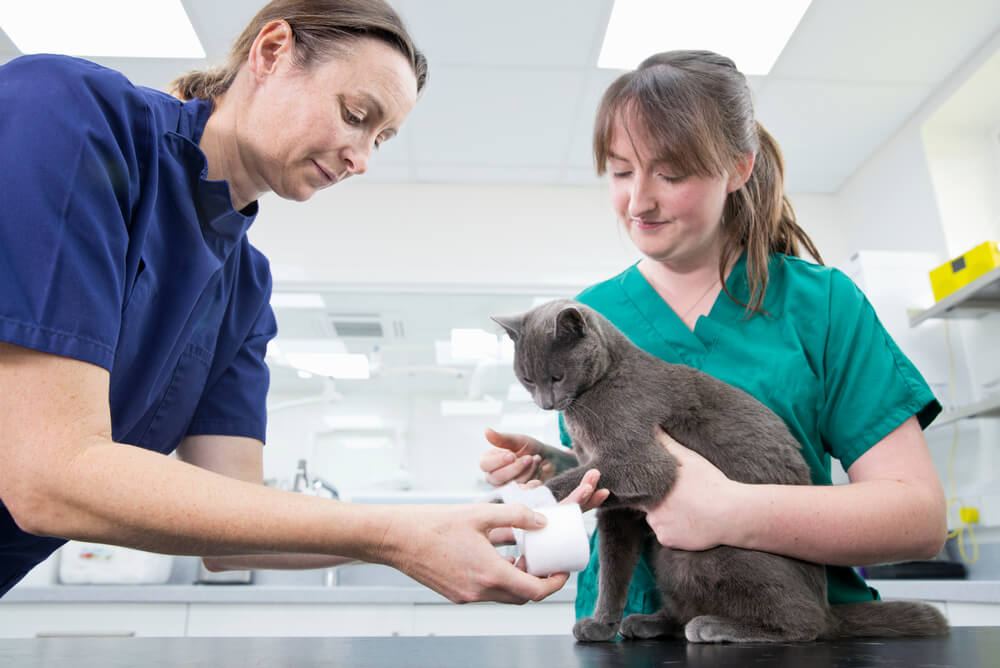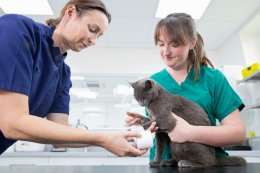
It’s a safe bet to say that we’re a pet-loving country, yet, new research from Compare the Market has found that we may not be taking care of our pets as much as we should.
The latest findings from the pet insurance comparison site found that almost two in five pet owners ( 39.2%) had not taken their cat or dog to the vet in the past 12 months!
The biggest reason why owners refused to take their pooch or tabby to the vet is because they think their pet is healthy and does not need a check-up. Another big reason why people have been skipping out on their annual checks was due to the costs associated with check-ups.
| % of cat/dog owners | ||
| Yes, I have taken my pet to the vet in last 12 months | 60.8% | |
| No, I haven’t taken my pet to the vet in the past 12 months | 39.2% | |
| Because I think they’re healthy and don’t need a check up | 17.9% | |
| Because I think it’s too expensive to take them | 9.7% | |
| Because of other reasons | 9.0% | |
| Because I don’t see the point of taking them for a yearly check up | 2.6% | |
Compare the Market’s General Manager of General Insurance and pet insurance expert, Adrian Taylor, said that the findings of the research are concerning given that around a quarter of pet parents were not taking their cat or dog to the vet for an annual checkup during the same time last year.
“Our cats and our dogs are integral members of our families, yet many Australians admit to skipping important vet visits,” Mr Taylor said. “Even if you think your pet is healthy, taking them to the vet regularly is crucial to ensure that they are in tip-top shape.
“A vet visit may help find any illnesses or minor injuries early, which, if left untreated, could fester into severe diseases or pain for your pet. Regular check-ups ensure your pet is up to date with its vaccinations. Treatment for these ailments for your pet may cost a lot more to treat at a later stage than if it was caught early on.
“What’s even more worrying is that number of pets not making it to the vet has increased from the same time last year, from about one in four pets, to two in five.
“This is a dramatic increase, and while much of it can come down to the cost of lifestyle crisis, clearly most of our survey respondents say it’s because they see no need for a quick trip to the vet.
“While no pet parent wants to see their furry friend in pain, what could hurt a lot more is making decisions on your pet’s life based on costs of treatment.
“To take the financial bite of making such decision, pet insurance may be able to help alleviate some costs associated not only on major treatments, but also potentially costs of routine care or even dental work, depending on the level of cover people take out and what extras are included in their pet insurance policy.
“Prevention or catching symptoms early should always be the first thing people should aim for with their pets, however, pet insurance can be a great safety net for when worst does come to pass.”
Adrian Taylor’s top tips for people considering pet insurance:
- Get insurance earlier rather than later. Pet insurance premiums will be lower for a young pup or kitten than if you were to insure your pet at a later stage, as the older they are more likely to have pre-existing conditions that could drive up the cost to be covered.
- Be sure to read the Product Disclosure Statement (PDS) to understand the limits of the cover you are looking to buy. There may be a difference in the levels of reimbursement depending on the level of cover you’re looking at as well as between brands. A variety of products cover between 70% and 90% of vet bills, however, there are products that cover less and others that cover more. For most claims you will also need to contribute the policy excess.
- Consider what you need. When reviewing your pet insurance options, also consider if there are any types of extras that you would like your policy to include. Depending on your level of cover, you may be able to add on extras such as dental cover, routine care or even behavioural training, though this may increase the premiums that you will need to pay.
*Compare the Market surveyed 1,010 people aged 18 and over in April 2024
-ENDS-
For interviews and more information, please contact:
Noémi Hadnagy | m: 0433 377 252 | e: [email protected]
Compare the Market is a comparison service that takes the hard work out of shopping around. We make it Simples for Australians to quickly and easily compare and buy insurance, energy, and home loans products from a range of providers. Our easy-to-use comparison tool helps you look for a range of products that may suit your needs and benefit your back pocket.








